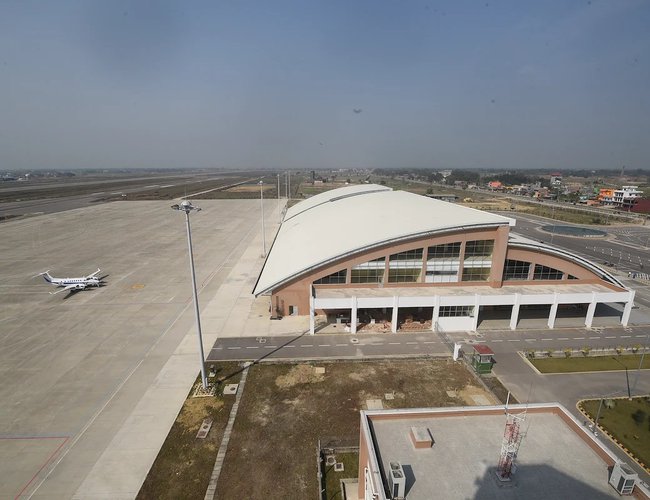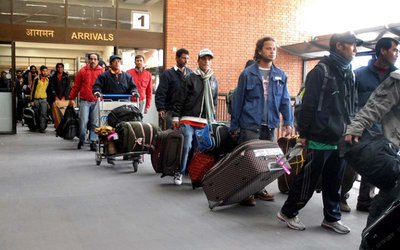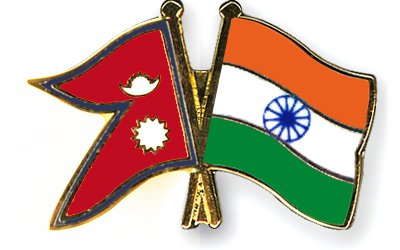
During my initial visit to the Indira Gandhi International Airport in Delhi via Air India in 2011, I endured a terrible experience and wanted to voice my concerns so others could avoid a similar fate. The NepalNews reported the start of improvements after a complaint was made in an opinion article posted on Nepalnews about the poor treatment of Nepali passengers at the airport. The response from the authority read:
“We have gone through the issues raised by Dr. SanjayaGajurel and the unpleasant experience at IGI Airport, New Delhi is deeply regretted,” said a letter from the IGI’s Public Grievances Office, which was addressed to the heads of the concerned departments of the airport. Previously, Asst. General Manager O.P Chamoli, had written to the Under Secretary of the Ministry of Civil Aviation, Oma Nanda, and other concerned officials, “It is requested to examine/investigate the matter in detail on priority and send your reply to the complainant
directly under the intimation of this office to enable us to reply to MCA and dispose of the case.”
I recently returned to the airport in December 2022 after 11 years and was eager to witness the improvements in person, but also felt some anxiety. This time, I did not have to recheck my luggage at Delhi Airport and it arrived safely at the destination in Nepal. Despite recent efforts to enhance the infrastructure and services, travelers may still encounter various problems at the airport. Some of the common challenges faced by travelers at Delhi Airport include, but are not limited to:
Crowded and congested airport: Due to the high volume of travelers passing through, the airport can become overcrowded, resulting in long lines and delays at check-in, security, and immigration.
Long security lines: Multiple security checks were put in place for security purposes, however disorganization or poor coordination among airport staff led to lengthy lines. This caused confusion and frustration among travelers, who felt they were being subjected to unnecessary or duplicative checks and questioning.
Limited seating availability: The airport has limited seating options, making it uncomfortable for travelers who have to wait for extended periods for their flights. Although there were a few lounge-style seats, they were all occupied. Implementing rules for proper usage of public spaces would be beneficial.
Limited food and beverage options: The airport has limited food and beverage choices, particularly in non-premium terminals, making it challenging for travelers with dietary restrictions or seeking more options. Additionally, authentic Indian food is hard to find, with most stalls offering Western fast food franchises that failed to meet our expectations of trying different Indian cuisine.
Children Park: The inclusion of a children's park near the food court is a positive step, but it was closed off with barricade tapes without any explanation. Despite this, some children were still playing there, potentially putting themselves at risk of injury.
Confusing signage and navigation: The airport has limited or inadequate signage, making it challenging for travelers to navigate. While separate security checks for female travelers were present, they were not easily noticeable. The staff also lacked a customer-service oriented demeanor, failing to offer assistance to female travelers, particularly those with crying children, in common lines.
In areas where signs were present, they proved to be misleading. For instance, after being transported from the tarmac to the airport, there were signs for baggage claims and transfer passengers, but everyone was forced to merge into one line without any clarification from the staff.
Rude and abusive behavior by airport staff: This encompasses airport staff acting impolitely, uncooperative, or even abusive towards travelers, particularly people of color. This can be a significant issue as it leads to stress and frustration for travelers and can result in complaints and unfavorable reviews of the airport. This can stem from various reasons such as airport staff being overburdened and understaffed or lacking proper training and support.
While traveling from Chicago to New Delhi on Air India, the airline attempted to issue new tickets as if the alliance airline's tickets were invalid. Passengers were taken out of the boarding line and brought to the Air India counter, where they were asked irrelevant questions and even subjected to phone calls with authorities despite presenting valid passports and boarding passes, causing confusion and frustration.
When rechecking luggage after immigration in Chicago, we discovered that the luggage tags indicated Chicago as the destination, despite the fact that our tickets clearly stated that our luggage was meant to go to Cleveland. We had to resolve this issue by presenting our printed ticket during rechecking to avoid a fee for baggage handling. Therefore, it is important to double-check the destination on your luggage tags at the first airport you arrive at.
The Indian government has declared plans to renovate and expand the airport to accommodate the rising passenger volume. However, if a traveler experiences mistreatment by airport staff, they can reach out to the airport's customer service department to file a complaint and seek resolution.
The airport management needs to take action to tackle this problem and ensure that airport staff receive proper training and support to deliver exceptional customer service to travelers. This can include coaching on customer service and communication techniques, along with sufficient support and resources for airport staff to fulfill their responsibilities efficiently. To minimize the discomfort caused by repeated security checks, the airport management can increase staff numbers during high travel seasons, communicate clearly and consistently with travelers, and invest in technology like biometrics to hasten the security procedure.
Additionally, the airport authorities can establish a complaint system for passengers to report any concerns regarding staff behavior and conduct an investigation.
It's essential for travelers to keep in mind that airport staff handle a high number of passengers and are tasked with ensuring seamless operations and safety. A little bit of patience and comprehension can help resolve issues. Before reaching the airport, travelers can prepare all necessary documents and become familiar with security procedures to prevent delays and issues with multiple security checks. Also, it's recommended to have a minimum of a couple of hours of transit time. Our experience of having just over an hour of transit time at Delhi Airport resulted in a rushed trip to the gate to catch a flight to Nepal.
Here are a few references that provide information on the issues travelers may face at Indira Gandhi International Airport (IGIA) in Delhi, India and the factors that contribute to these issues:
● Passenger Satisfaction with Indira Gandhi International Airport
● Delhi Airport: A Study of Passenger Satisfaction
● Passenger Satisfaction with Airports in India
● Airport Service Quality in India: A Study of Passenger Perception
● Airport Service Quality and Passenger Satisfaction in India
Traveling could be a more enjoyable experience if airport staff were friendly and offered assistance to travelers. The government has plans for renovation and expansion, but it's crucial for airport management to take steps to address these issues and provide better customer service through staff training and resources. This also applied to all other airports including Tribhuvan International Airport (TIA) in Nepal. Travelers also play a role in having necessary documents ready and being patient with airport staff.
Gajurel works as a senior computational scientist and an adjunct assistant professor at Case Western Reserve University.













